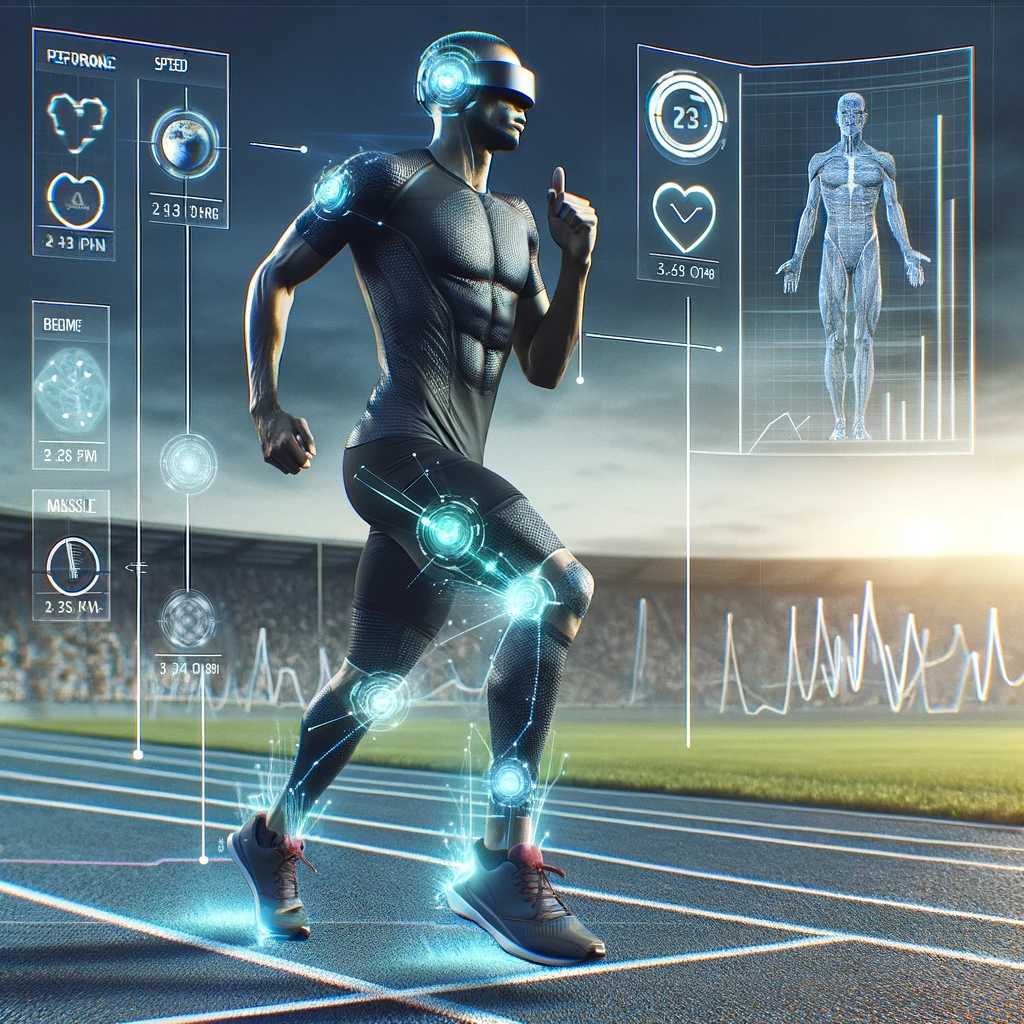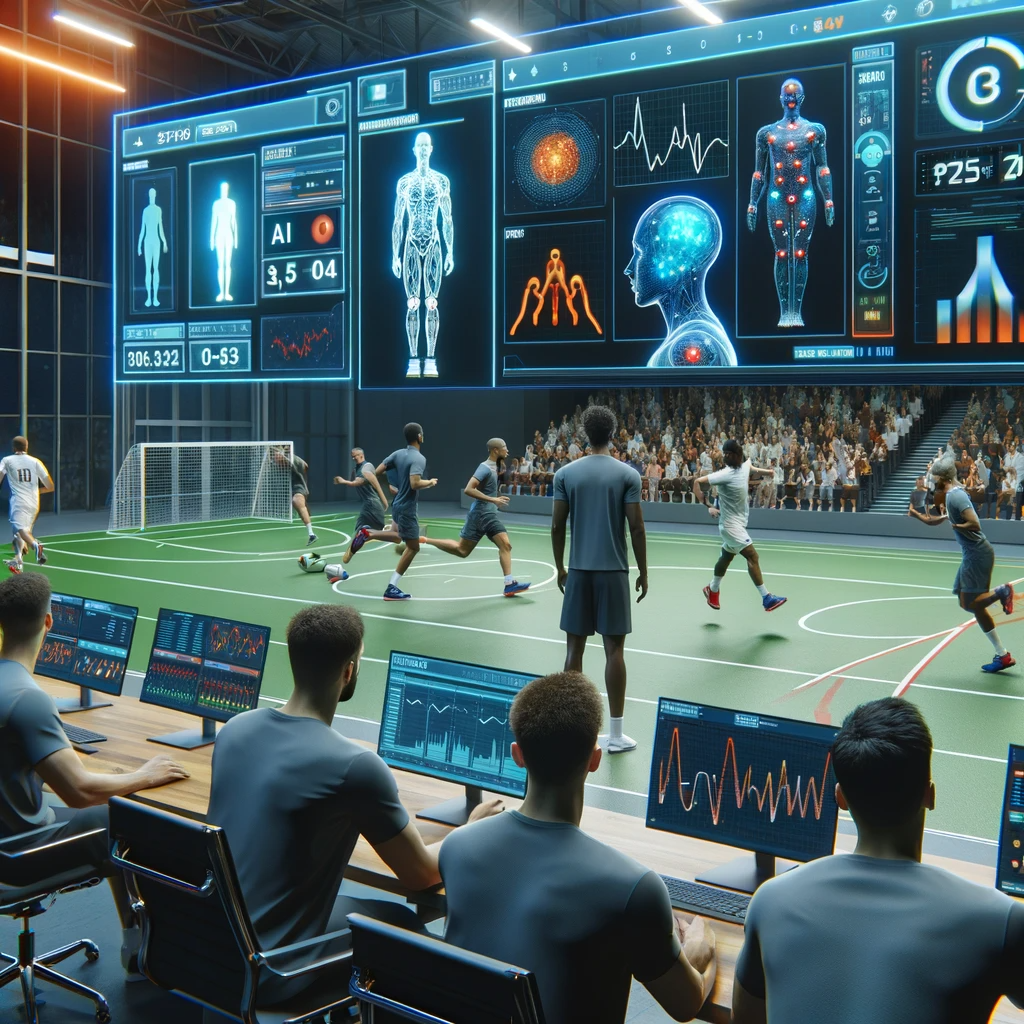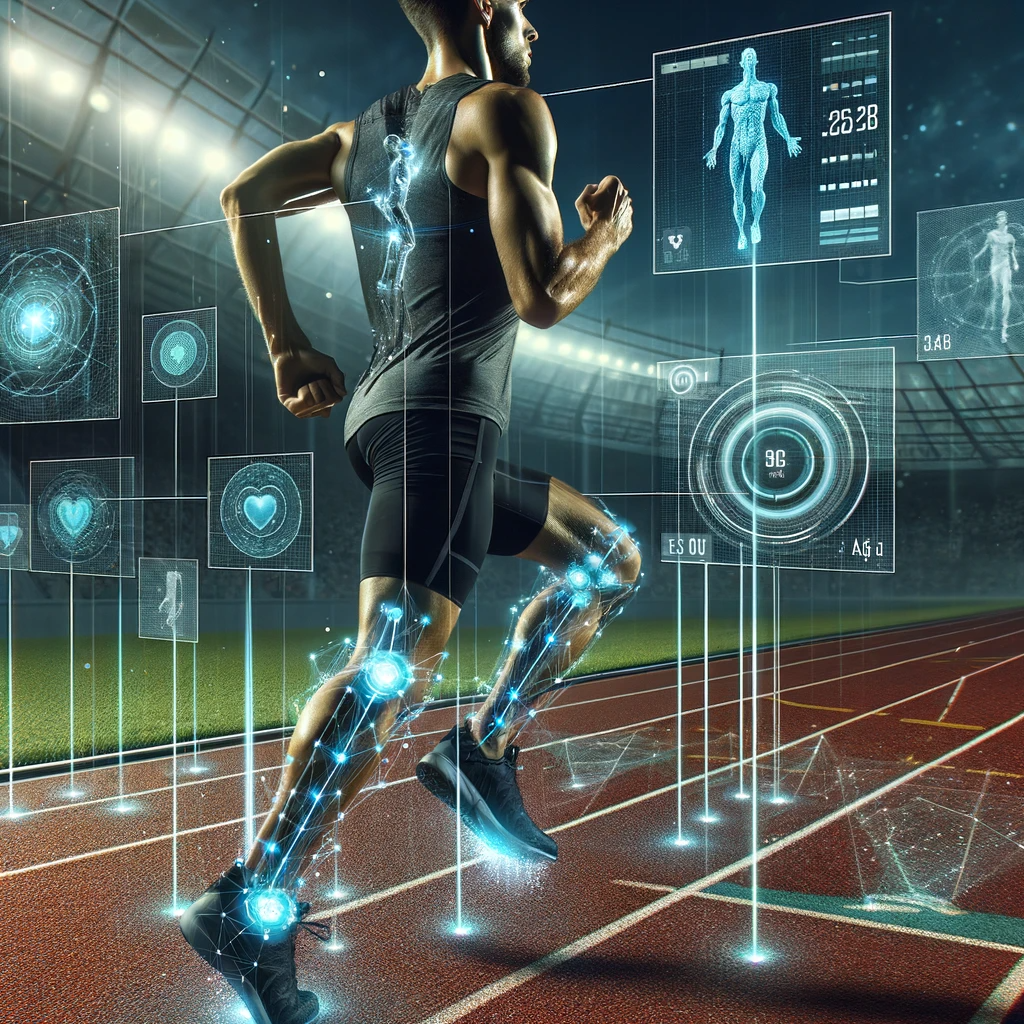In the world of sports, where milliseconds can determine victory or defeat, and the slightest edge can make a monumental difference, the pursuit of excellence has always been relentless. Athletes and teams have long sought ways to harness data and technology to enhance performance, gain a competitive advantage, and minimize risks. Enter Artificial Intelligence (AI), a revolutionary force that is poised to change the landscape of sports analytics and athlete performance in ways previously unimaginable.
In today’s era of data-driven decision-making, sports analytics has become integral to the success of athletes and teams across various disciplines. The vast amount of data generated during competitions, training sessions, and even in the athletes’ daily lives has prompted a paradigm shift in how sports are understood and approached. AI, with its remarkable ability to process, analyze, and derive meaningful insights from massive datasets, has emerged as a game-changer in this domain.
This article embarks on a journey into the transformative role of AI in sports, from enhancing performance to predicting and preventing injuries, refining game strategies, and providing personalized training regimens. As AI continues to push the boundaries of what is possible in the world of sports, it is essential to explore its impact, ethical considerations, challenges, and the exciting future that lies ahead.
With AI as the driving force, the sports industry is undergoing a revolution that promises to redefine the way athletes perform, coaches strategize, and fans engage with their favorite games. Join us as we delve into this AI-powered journey through the world of sports analytics and athlete excellence.
The Evolution of Sports Analytics
For decades, sports relied on traditional methods of scouting, coaching, and performance evaluation. Coaches and analysts would often rely on intuition and limited statistical information to make decisions. However, this approach had its limitations. The emergence of sports analytics marked a significant shift in the way sports were approached.
In recent years, sports analytics has evolved from a niche practice to a mainstream necessity. Teams and organizations now employ data scientists, statisticians, and analysts to collect and analyze vast amounts of data generated during games and practices. This data includes player movements, ball tracking, physiological metrics, and more.
The adoption of sports analytics has been driven by the desire for a competitive edge. Teams recognize that even small advantages can lead to significant differences in outcomes. Advanced analytics has allowed for a deeper understanding of player performance, team strategies, and opponent tendencies.

The Basics of AI in Sports
Artificial Intelligence (AI) is a field of technology that encompasses various subsets, including Machine Learning (ML) and Computer Vision. In the context of sports analytics, AI involves the use of algorithms and computational models to process and analyze data.
Machine Learning algorithms enable computers to learn from data, identify patterns, and make predictions or decisions. In sports, ML can be applied to various aspects, such as player performance analysis, injury prediction, and game strategy optimization.
Computer Vision, another branch of AI, involves the interpretation of visual information from images or videos. In sports, Computer Vision can track player movements, analyze ball trajectories, and even provide insights into fan engagement by recognizing crowd reactions.
The marriage of AI, particularly Machine Learning and Computer Vision, with sports analytics has opened up new possibilities for understanding and improving athletic performance.
Data-Driven Performance Analysis
One of the most impactful applications of AI in sports is data-driven performance analysis. AI systems can process enormous amounts of data, including player statistics, physiological data, and video footage, to provide comprehensive insights into athlete performance.
AI algorithms can track player movements in real-time, enabling coaches and analysts to gain a deeper understanding of an athlete’s strengths, weaknesses, and tendencies. For example, in basketball, AI can analyze a player’s shooting accuracy, passing patterns, and defensive strategies by processing video footage of games.
Additionally, AI can provide insights into player fatigue and injury risk by monitoring physiological data such as heart rate, sleep patterns, and workload. This information allows teams to optimize training regimens and reduce the risk of injuries.
Injury Prediction and Prevention
Injuries are a significant concern in sports, often sidelining athletes and impacting team performance. AI has emerged as a valuable tool in predicting and preventing injuries. By analyzing player data and movement patterns, AI algorithms can identify potential injury risks.
For instance, AI can detect subtle changes in an athlete’s gait or movement mechanics that may indicate an increased risk of injury. By alerting coaches and medical staff to these risks, preventive measures can be taken, such as modifying training routines or implementing targeted rehabilitation exercises.
AI-driven injury prevention strategies not only contribute to athlete longevity but also benefit teams by ensuring that key players remain healthy and available for competitions.
Personalized Training and Performance Enhancement
Every athlete is unique, and what works for one may not work for another. AI recognizes this individuality and offers personalized training and performance enhancement solutions. By analyzing an athlete’s data and performance history, AI can tailor training regimens, nutrition plans, and recovery strategies to match the individual’s specific needs and goals.
For example, AI can adjust a runner’s training schedule based on their progress and physiological responses. It can recommend specific exercises to address weaknesses or imbalances in an athlete’s musculoskeletal system.
Personalized training not only enhances performance but also reduces the risk of overtraining and burnout, ensuring that athletes can perform at their best over the long term.
Game Strategy and Tactical Insights
AI is also transforming the way teams approach game strategy and tactics. Machine Learning algorithms can analyze vast amounts of game data, including opponent performance, historical match-ups, and player statistics, to provide actionable insights.
For instance, in soccer, AI can analyze an opponent’s defensive strategies and identify potential vulnerabilities. Coaches can use this information to develop game plans and tactics that exploit these weaknesses.
AI can also assist in in-game decision-making. Real-time data analysis allows coaches to make informed choices, such as when to substitute players or change strategies, to maximize the team’s chances of winning.
Ethical Considerations and Data Privacy
The use of AI in sports analytics raises important ethical considerations, including data privacy and potential biases in algorithms. Athletes’ data, including physiological information and performance metrics, must be handled with care to protect their privacy rights.
Moreover, AI algorithms can inadvertently introduce biases if the training data is not diverse and representative. This could lead to unfair player evaluations or strategic decisions. To address these concerns, transparency in AI usage and adherence to data privacy regulations are paramount.
Challenges and Future Directions
The integration of AI in sports analytics faces several challenges, including the need for high-quality data, cost considerations, and the potential resistance to change within sports organizations. Overcoming these challenges will be crucial for AI’s continued impact on sports.
The future of AI in sports analytics is exciting. Advancements in AI algorithms, increased availability of data, and the development of wearable technology are expected to further enhance athlete performance, injury prevention, and game strategies. As AI continues to evolve, the boundaries of what is achievable in the realm of sports analytics will expand, promising a future where athletes and teams can reach new heights of excellence.

Conclusion
As we conclude our exploration into the transformative impact of Artificial Intelligence (AI) on sports analytics and athlete performance, it becomes evident that we are witnessing a profound shift in the world of sports. AI is not merely a technological innovation; it is a game-changer that has already begun to redefine how athletes train, compete, and excel.
The evolution of sports analytics from traditional methods to data-driven decision-making has set the stage for AI to make its mark. The ability to process vast amounts of data, analyze player movements, predict injuries, and personalize training regimens has elevated athlete performance to new heights. AI has become an indispensable tool for coaches, analysts, and athletes alike, providing insights that were once inconceivable.
Injury prevention, a critical aspect of athlete longevity, has seen remarkable advancements through AI. Early detection of injury risks based on movement patterns and physiological data has enabled athletes to stay healthier and perform at their best. The days of careers cut short due to preventable injuries are gradually becoming a relic of the past.
Personalized training and performance enhancement, another frontier unlocked by AI, cater to the unique needs of every athlete. The era of one-size-fits-all training regimens is giving way to tailored plans that optimize an athlete’s strengths and address weaknesses, ensuring sustained excellence.
AI’s influence extends beyond individual athletes to team strategies and tactics. Coaches and analysts now have a powerful ally in AI, which provides real-time insights and assists in optimizing game plans. The use of AI in sports is a testament to the fusion of human expertise with machine intelligence, resulting in a competitive edge that can be the difference between victory and defeat.
However, as with any technological revolution, ethical considerations and data privacy must be paramount. Protecting athletes’ data and ensuring fairness and transparency in AI algorithms are essential to maintaining the integrity of sports analytics.
Looking ahead, the future of AI in sports analytics is bright. Advancements in AI algorithms, increased data availability, and the continued development of wearable technology promise even more significant strides in athlete performance and game strategy optimization. As AI continues to evolve, the possibilities for sports analytics are limitless, offering athletes and teams the tools they need to reach new pinnacles of achievement.
In this era of AI-powered sports analytics, where every movement is analyzed, every weakness addressed, and every opportunity seized, the pursuit of excellence in sports has entered a new and exhilarating phase. With AI as their ally, athletes and teams are poised to redefine the boundaries of human performance, making sports not just a test of physical prowess but also a celebration of technological innovation and the relentless pursuit of perfection.
